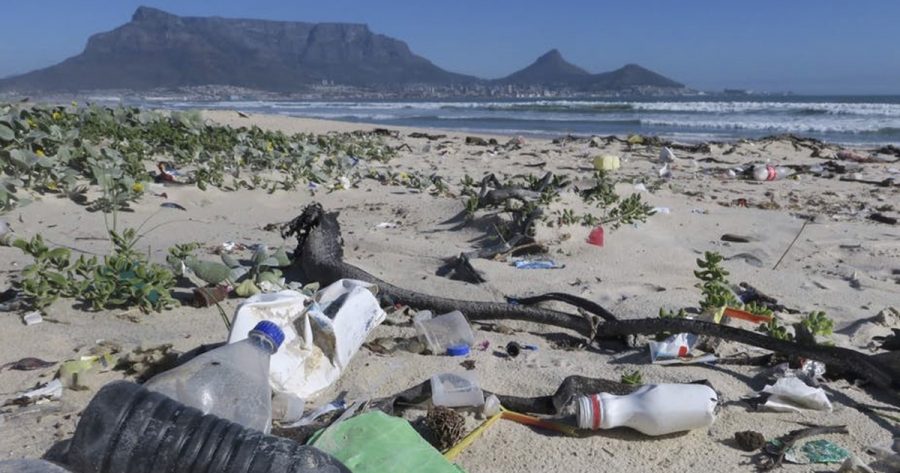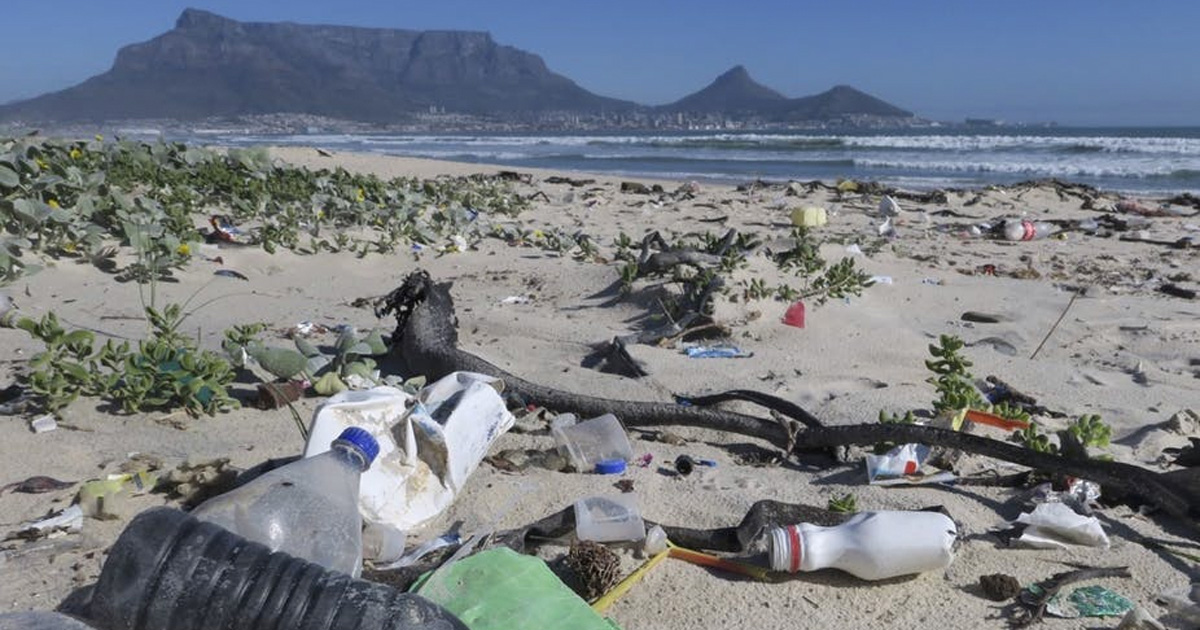
We Looked for South Africa’s ‘Missing’ Plastic Litter. This is What we Found
Every year, the world produces about 300 million tonnes of plastic. Somewhere between 5 million and 12 million tonnes of it finds its way into the oceans, according to a 2015 study by Jenna Jambeck and colleagues. But only a tiny fraction of that is estimated to be floating at sea – around 200,000 to […]

Every year, the world produces about 300 million tonnes of plastic. Somewhere between 5 million and 12 million tonnes of it finds its way into the oceans, according to a 2015 study by Jenna Jambeck and colleagues. But only a tiny fraction of that is estimated to be floating at sea – around 200,000 to 300,000 tonnes, or less than 5% of the annual input.

So where does all the plastic go?
Several studies have used models to try to work it out. Bert Koelmans and colleagues suggested that the explanation could be that plastic breaks up into fragments and sinks. They concluded that almost all the plastic that has entered the sea since the 1950s has sunk to the seabed.
This requires most litter to sink within a few years of entering the sea. But only 2% of plastic items found in the North Pacific ‘garbage patch’ (the area in the North Pacific where floating litter accumulates) are less than five years old. And this makes sense because it would take them a long time to reach the regions of the ocean where they accumulate like this.
Koelmans’ model excluded beached items. A more recent study by Laurent Lebreton and colleagues suggests that 96%-98% of litter from land-based sources washes up within one year of entering the sea. They conclude that most of the missing plastic has been under our noses all the time, on our beaches. This is also the conclusion reached by Arianna Olivelli and colleagues, whose research was reported recently in The Conversation.
Olivelli’s survey of beaches around Australia found that most litter items were concentrated on the backshore storm strandline, where litter items were larger on average than along recent tide-lines closer to the sea.
This result is an artefact of their visual survey technique. Small litter items predominate along recent strand lines because they are much more common at sea than large items, but they are more readily buried by wind-blown sand, resulting in mostly large items being visible on the backshore.
Had the researchers sampled beneath the surface, they would have found small plastic items also concentrate along the backshore. We know this from our surveys that sample buried litter across all strandlines.
Olivelli’s study didn’t measure the amount of litter on the shoreline, and thus couldn’t test whether there was enough stranded plastic to balance the plastic budget.
Measuring plastic on South African beaches since the 1980s
My research team has been measuring macro- and microplastic loads on South African beaches since the 1980s. We collect all litter items, including buried items, by sieving sand through a 2mm mesh from the sea’s edge to the backshore. We started this study in the 1980s to try to understand the origin of small plastic fragments we were finding in a wide range of seabirds in the region.
South Africa is an ideal place to study the fate of marine plastics because it is far from other major litter sources, and so most of the litter comes from local sources. The country is ranked as the 11th worst offender in terms of land-based sources of litter entering the sea. It is important that we understand the sources and movement of plastic in marine systems if we are to devise effective policies to reduce the amounts entering the sea.
Testing the models in South Africa
Jambeck’s 2015 study estimated that the high proportion of mismanaged waste in South Africa results in 90,000 tonnes to 250,000 tonnes of plastic entering the sea each year. Physical models of local currents suggest that at least 60% of this plastic should wash ashore, mostly close to the major urban source areas. This conclusion is supported by our beach data, which show much greater amounts of macro- and microplastics close to coastal cities than at more remote sites.
If Jambeck’s estimates are correct, we should see 20kg-50kg of plastic washing ashore per metre per year along South Africa’s 3,000km coastline. Yet the amount of plastic litter averages less than 0.1kg per metre. Even allowing for beach cleaning efforts, the numbers don’t add up. When we collect all the litter washing ashore every day, the most we can account for is 5,000 tonnes to 10,000 tonnes of plastic per year, extrapolating over the entire coastline. And much of this comes from offshore sources (fishery and other marine litter accounts for 30%-70% of the mass of litter washing ashore).
To directly measure the amount of plastic leaking into the sea from urban areas, my student Eleanor Weideman sampled litter loads in Cape Town storm drains. She found the amount was less than one-tenth of the global prediction from Jambeck’s study, and in line with the amounts washing up on local beaches.
Refined estimates conclude that – at least for South Africa – there isn’t any missing plastic
Refined estimates of the amounts and fates of solid waste also conclude that – at least for South Africa – there isn’t any missing plastic. It was just an artefact of an inflated global model. Similar data are needed for other countries to assess whether our conclusions apply generally to the Jambeck model predictions.
Despite there being less plastic entering the sea from South Africa than previously thought, there’s still a serious plastic pollution problem. Most rural and many urban households in South Africa lack municipal waste collection, leading to many informal dumpsites. And not all municipal dumpsites are well managed. Wind-blown plastic is a major problem at many sites. Street litter is also a significant issue, with urban beach litter dominated by packaging for convenient on-the-go snacks and drinks.
We need to urgently address these issues to reduce the impacts of plastic pollution on aquatic systems, both freshwater and marine.![]()
Peter Ryan, Director, FitzPatrick Institute of African Ornithology, University of Cape Town
This article is republished from The Conversation under a Creative Commons license. Read the original article.
